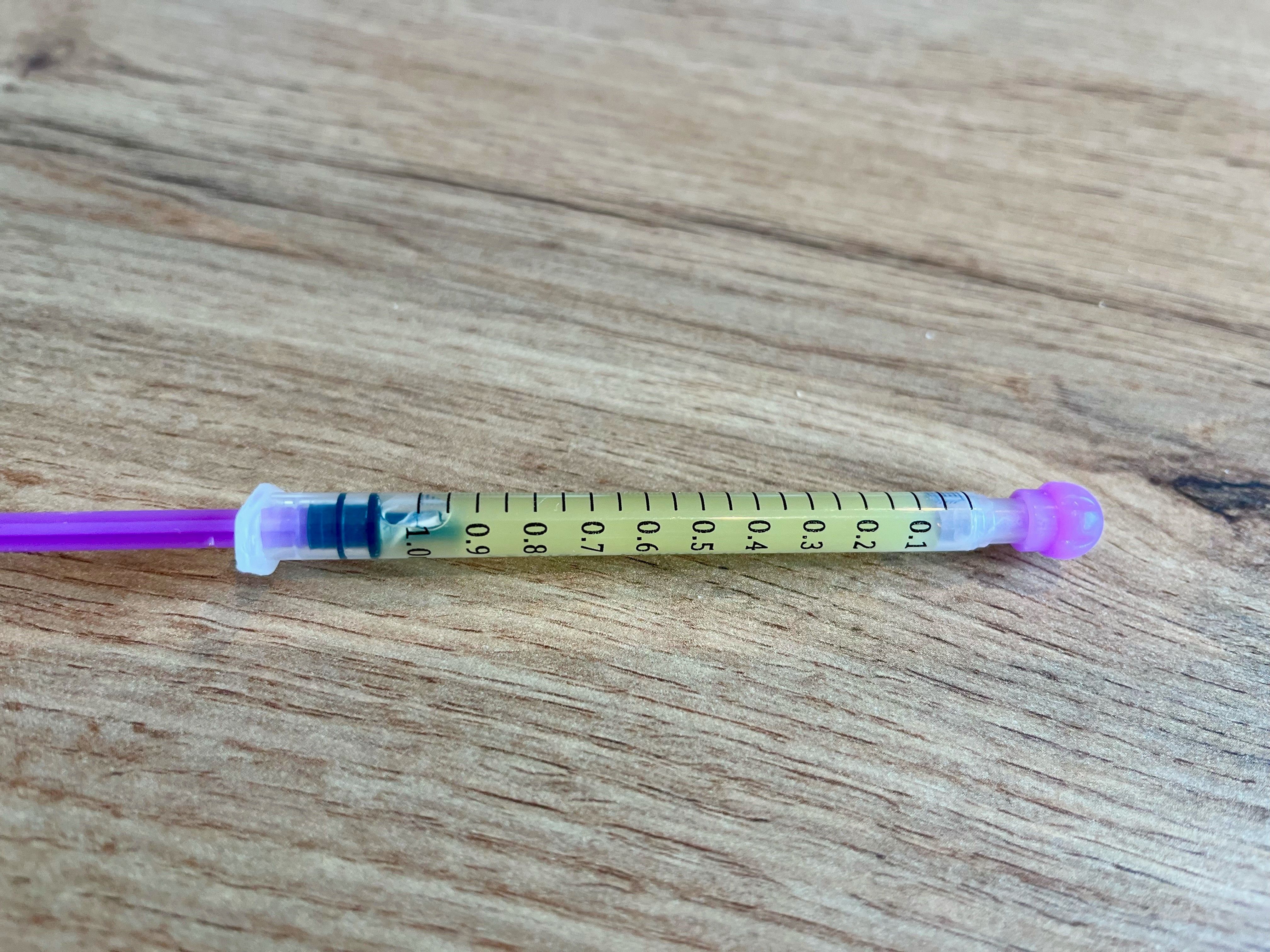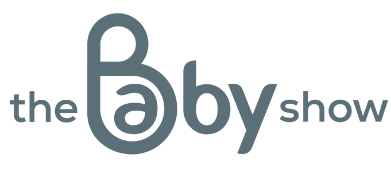What is Colostrum Harvesting?
)
Colostrum harvesting is one of the best ways you can prepare to breastfeed during pregnancy, but unfortunately it isn’t taught in great detail as standard practice and you often have to seek out the information yourself.
Luckily you’ve come to the right place – this article tells you everything you need to know about colostrum harvesting, the benefits and how to get started.
What is colostrum?
Colostrum is the first milk your breasts produce, and milk production begins around week 16-20 of your pregnancy. It’s a thick, concentrated liquid full of immune protective factors and everything your baby needs for their first feed. Colostrum can appear completely clear, white, yellow or even slightly blue due to a protein present called casein – this is all normal. It can also look pink, red or brown and this is due to a temporary condition called Rusty Pipe Syndrome. This colour may look alarming but is nothing to worry about; it just reflects the presence of a small amount of blood in your milk and should resolve itself in a few days. Most importantly, it is perfectly safe to harvest and feed to your baby.
Colostrum is produced in very small amounts because that’s all your baby needs in the first couple of days. At birth, their stomachs can only hold around 5-7ml of milk, so they’ll naturally want to feed a lot but they’ll digest the milk quickly. It can seem like they’re feeding non-stop in the first hours and days, but babies are very clever and know to stimulate your milk production by feed feed feeding!
Colostrum begins to transition into mature milk in the first few days following the birth. Mature milk is produced in larger quantities, and this increase in milk production perfectly complements your baby’s slowly expanding stomach.
When is it safe to start collecting my colostrum?
If your pregnancy is low risk, from 36 weeks you can begin to hand express and harvest your colostrum. If your pregnancy is high risk then it’s important to discuss colostrum harvesting with your midwife to check if it’s safe for you to do so.
The reason why it’s recommended to wait until 36 weeks is because of a hypothetical theory that the increasing levels of oxytocin (the hormone required to secrete milk out of the nipple) could cause contractions. This theory is hypothetical and not founded in enough evidence to discourage colostrum harvesting – but to be on the safe side, waiting until 36 weeks is recommended. If you are having a planned c-section at 36 weeks or earlier and wish to harvest your colostrum, discuss with your midwife the possibility of harvesting colostrum a little earlier. It’s very important to ensure you and your baby’s health & safety come first and your midwife will be able to make recommendations based on your specific circumstances and medical history.
How do I collect my colostrum?
The process of getting colostrum out of your breast is called hand expressing, and this literally means expressing milk from your breast using your hands. A pump wouldn’t work as effectively because colostrum comes out in such small quantities, the drops would get lost in the mechanism of the pump and you’d barely collect any compared with using a syringe.
Learning how to hand express and getting the technique right is the first step to giving yourself the best chance at collecting colostrum.
Watch my video tutorial on how to hand express and collect colostrum here.
If it’s safe for you to collect your colostrum from 36 weeks, start trying once a day (both breasts) and try to build up to 4-5 times a day. You’ll need 1ml oral syringes and it’s worth checking with your midwife as some NHS trusts do offer them for free. If not, you can buy a pack of them online – but make sure they come with caps so that your colostrum can be stored safely.
Make sure you’re feeling relaxed (stress can inhibit Oxytocin, the hormone required for the release of your milk known as your ‘let down’) and won’t be disturbed for at least 20 minutes before starting.
Start by gentle stroking your breast and nipple, no harder than you’d stroke a cat, for about a minute. Once you’ve done this you can begin to hand express.
If you do see colostrum appear, it will come out as a drop. Touch the tip of your syringe onto the drop and draw it up inside the syringe.
Once the colostrum slows or stops appearing, try the other breast, starting with the gentle stroking before moving onto hand expressing.
Safely storing colostrum

Once you have collected some colostrum (for some women they can collect several syringes per session, some only collect 0.1ml – every amount is incredibly useful!) you can freeze it. Make sure the cap is fastened on properly and you label each syringe with your name and the date it was frozen. It can be helpful to keep them all in a clear freezer/sandwich bag so that they can be transported to hospital easily if necessary.
I recommend freezing whatever you collect in that session to be on the extra safe side and ensure it is completely safe for your baby to consume, as changing the temperature by bringing it in and out of the fridge will increase the risk of harmful bacteria appearing.
Frozen colostrum at a temperature of -18°C can keep for up to six months.
If you’d like to learn more about how to transport your colostrum to hospital and defrost it safely, I’ve written a blog post about it here.
What are the benefits of collecting colostrum harvesting during pregnancy?
Harvesting your colostrum means that your baby’s first feed is ready and waiting for them – think of it as an insurance policy. If breastfeeding is delayed for any reason following the birth or you are separated from your baby temporarily, they can be fed your colostrum until breastfeeding can be initiated. This also removes the need for introducing formula if you don’t want to, as you can supplement with your own colostrum instead.
Prioritising uninterrupted skin-to-skin, keeping babies at their mothers’ breast and 1-to-1 support with positioning and latching is the best way to initiate breastfeeding, but if baby doesn’t latch within the first hour then you can move onto feeding them your harvested colostrum whilst still keeping them at the breast.
If your baby latches straight away you can still feed them your harvested colostrum after they’ve finished at the breast if they wanted it, rather than wasting it. But to know it’s there if you need it can really take the pressure off in those first couple of days whilst you get the hang of breastfeeding.
If baby is latching but you have concerns about nappy output/weight gain (the two biggest indicators that baby is getting enough milk), getting skilled feeding support swiftly is important to find the root cause of these issues, but your harvested colostrum can help in the meantime to increase their intake of milk and reduce the risk of dehydration and further weight loss.
Colostrum being your baby’s first feed has some fantastic benefits such as:
- High level of antibodies, protecting your baby from infection as they enter the world
- Laxative effect to help your baby pass their first poo called meconium
- Providing a protective lining of the gut to further prevent infection
- Reducing jaundice levels through hydration
There are also conditions such as gestational diabetes which is linked with a delay in your milk coming in, so mothers with GD are often encouraged to harvest their colostrum in pregnancy.
If you use up all of your harvested colostrum but breastfeeding is still not initiated, you can then continue to hand express (if you’re giving birth in hospital you’ll likely be provided with more syringes, but if you’re having a home birth it might be worth having spare syringes nearby) and feed your baby via oral syringe, so it will be useful if you already know what you’re doing and have mastered the skill of hand expressing.
Hand expressing can also be incredibly helpful to relieve engorgement (when your breasts are uncomfortably full of milk) at any point during your breastfeeding journey, it’s beneficial to familiarise yourself with your breast anatomy and know how to remove milk using just your hands. If you were away from your baby for the evening and your pump broke, your hands will come in… handy!
What does it mean if I’m unable to collect any?
People collect varying amounts of colostrum and it of course it’s partly to do with how frequently they attempt to, but it can also be due to hormone levels during pregnancy that can suppress oxytocin, which is the hormone needed to secrete milk. For some people it can take a week or two to start collecting significant amounts of colostrum. Some may only get 0.1ml, and some won’t be able to get any at all. This is not a reflection of your milk supply so please don’t worry about not having milk once your baby arrives. I’d recommend you continue trying as you are still stimulating your milk-making hormones and familiarising yourself with how to hand express.
Make sure you’ve got the right technique and know exactly where to compress your breast is going to increase your chances of collecting colostrum. My hand expressing video is the perfect place to start if you’re unsure of your technique. I also have a video showing common hand expressing mistakes to avoid.
If breastfeeding is delayed but you don’t have any harvested colostrum, you can still hand express and feed your baby via oral syringe following the birth. Keeping your baby skin-to-skin and encouraging them to latch and feed as much as possible in those early hours is the most effective way to support your milk supply.
.png)
